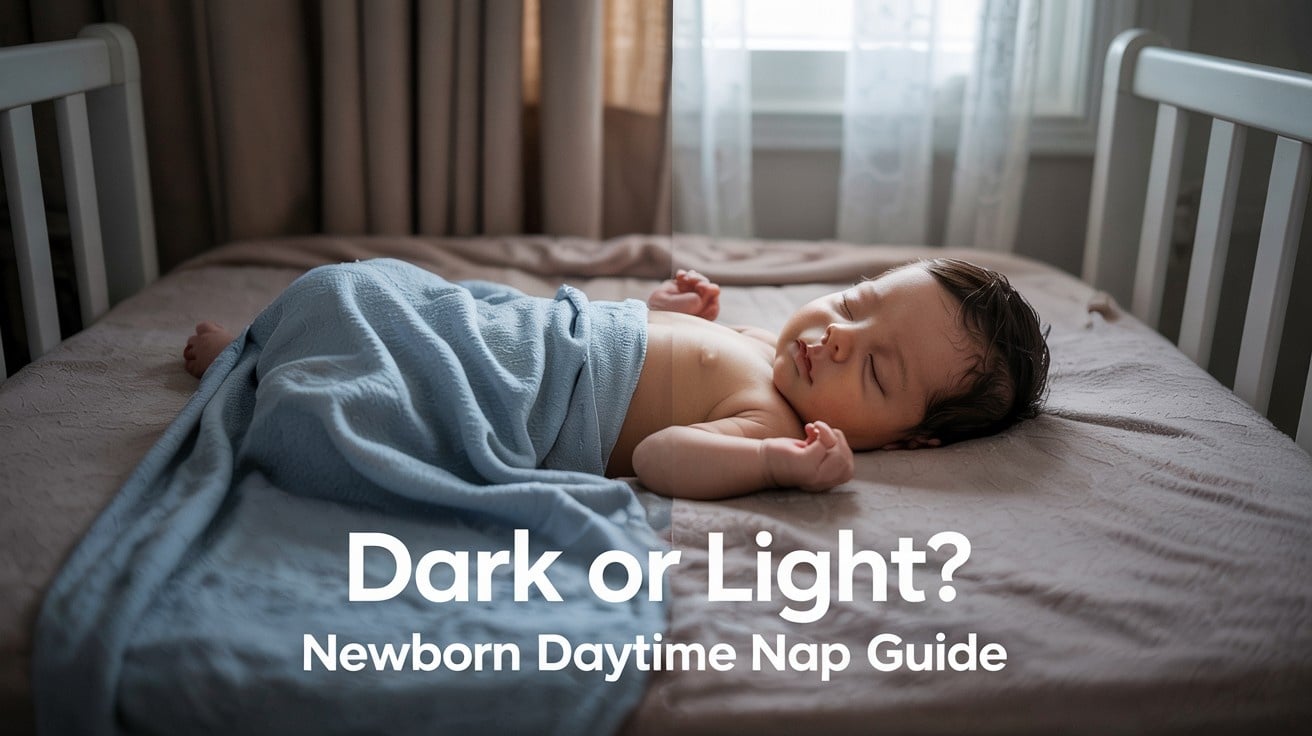
Ever noticed your baby naps better during a power outage? That’s no coincidence!
Newborn sleep quality directly impacts cognitive development, emotional regulation, and growth—yet many parents struggle with creating optimal napping conditions.
“Should I keep the blinds closed for every nap?” “Am I creating a light-sensitive baby?” “How will my little one learn day from night?”
These questions plague exhausted parents searching for the perfect balance.
The darkness debate divides even sleep experts, leaving parents confused about whether to embrace blackout conditions or let natural light filter through.
We’ll illustrate the science behind newborn sleep environments, explore practical darkness solutions for any budget, and provide age-appropriate recommendations as your baby grows.
You’ll learn exactly how dark is dark enough—and when it’s time to let the light in.
Why Does Darkness Matter for Newborn Sleep?
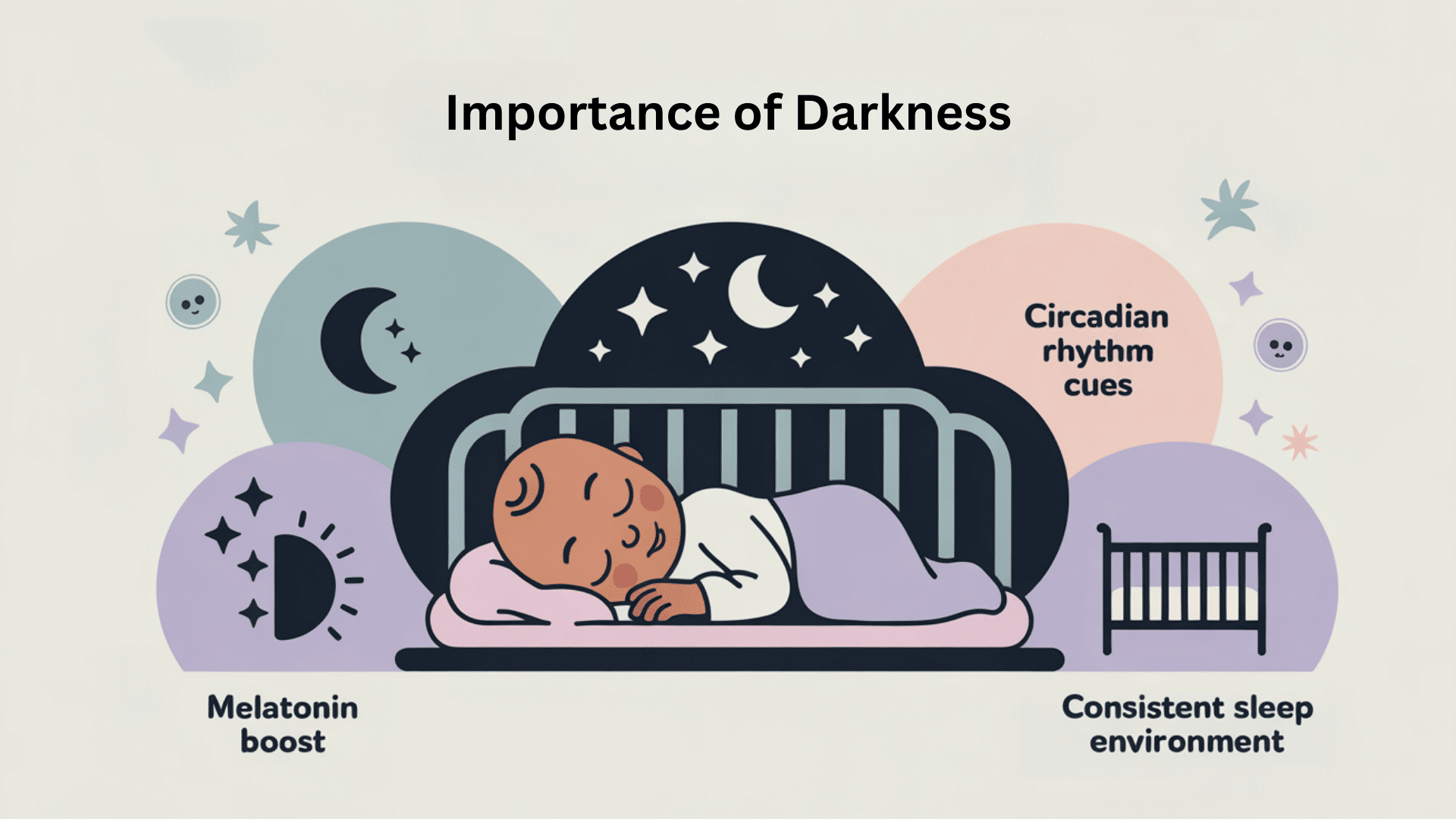
Darkness is crucial for newborn sleep because it triggers melatonin production, the hormone responsible for regulating sleep-wake cycles.
This system is still developing in newborns, making them more sensitive to environmental light. Even minimal light exposure can suppress melatonin, potentially disrupting their natural sleep patterns.
Light acts as a powerful cue for a newborn’s developing circadian rhythm. Bright environments signal “awake time” to their brain, while darkness communicates “sleep time.” This distinction helps babies gradually learn the difference between day and night.
Consistent sleep environments, particularly darkened rooms for naps, help reinforce these sleep associations. When babies nap in similar conditions each time, their bodies learn to anticipate sleep, making it easier to fall and stay asleep.
This consistency leads to longer, more restorative naps, contributing to better overall development and temperament.
The Ideal Napping Environment for Newborns
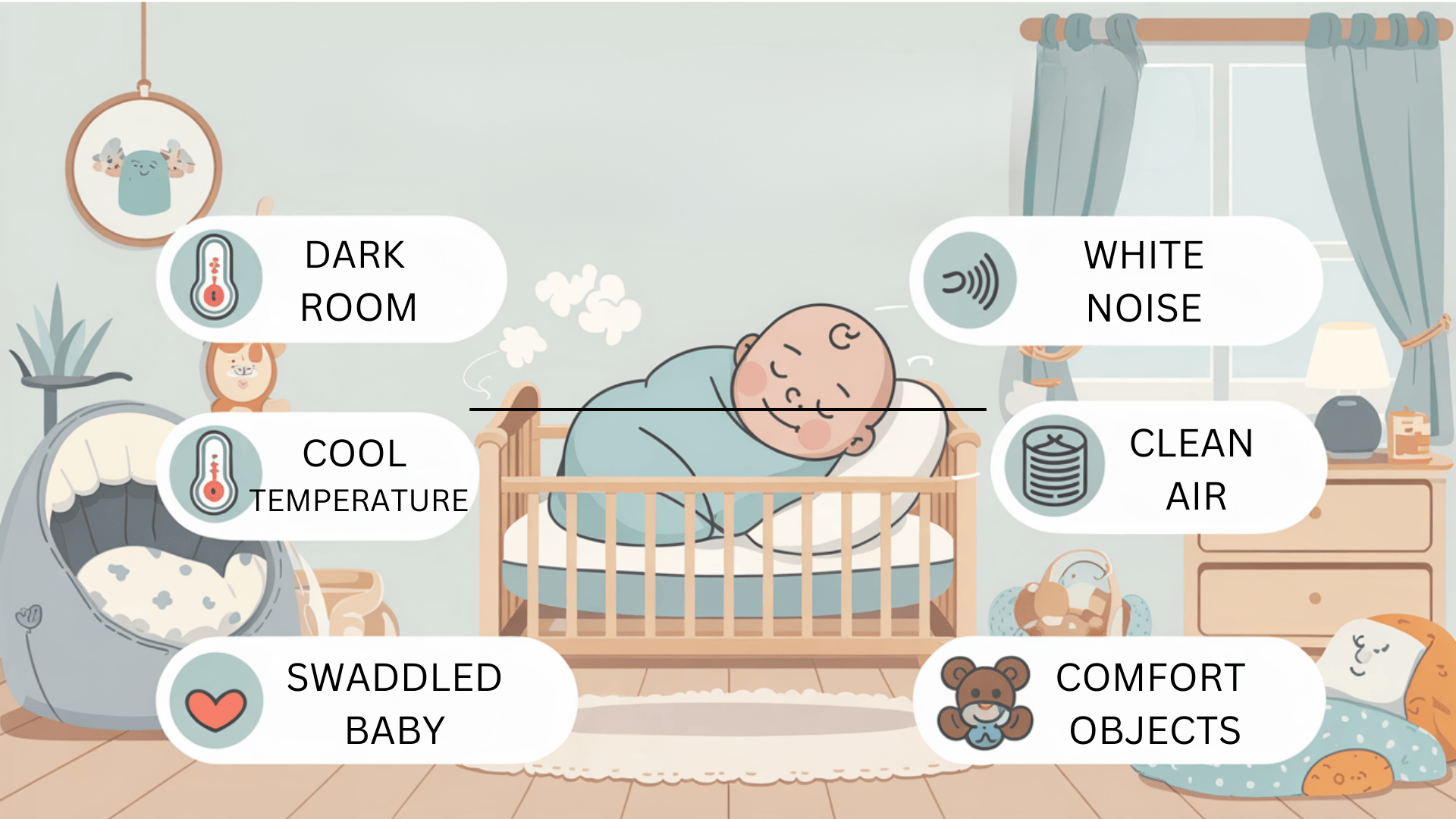
Creating the perfect sleep sanctuary for your newborn can significantly improve nap quality. Here’s what you need to know about crafting the ideal napping environment:
1. Darkness Recommendations
The ideal napping space for a newborn should be about 80–90% dark. While full blackout conditions can help, they’re not necessary for every baby.
The key is to reduce visual distractions and support melatonin production. Keeping nap environments consistently dark also helps build strong sleep associations and supports a healthy circadian rhythm.
2. Temperature Considerations
The ideal room temperature for newborn sleep is between 68–72°F, keeping the space comfortably cool. Overheating can affect sleep and pose safety risks, while a room that’s too cold may make it harder for your baby to settle.
To dress your baby properly, follow the one-more-layer rule—use one more layer than you’d wear yourself, adjusting based on the room temperature and season.
3. Noise Levels and White Noise Options
Newborns are used to constant sound from the womb, so complete silence can feel unfamiliar. Gentle background noise, like white noise, can help them sleep more soundly.
Options include white noise machines, fans, or apps. Keep the volume moderate—around 50–65 decibels, similar to a soft shower.
4. Other Environmental Factors
For safe and restful sleep, always place your newborn on a firm, flat surface without pillows, blankets, or toys. Many babies sleep better when swaddled, as it mimics the snugness of the womb—watch for signs that it’s time to stop swaddling.
Good air quality also matters; proper ventilation or a simple purifier can help, especially in areas with pollution. While comfort objects like Loveys can support sleep cues during supervised naps, they should be removed during unsupervised sleep until after 12 months.
Is Total Darkness Necessary?

Research suggests that while complete darkness creates optimal conditions for melatonin production, total blackout isn’t essential for newborn sleep.
Studies show that newborns benefit from a significantly darkened room (reducing light by 70-80%), but can still achieve quality sleep without perfect darkness.
The practical reality of parenting often requires finding balance. Many parents successfully use room-darkening shades rather than blackout solutions, especially when monitoring a baby or for daytime feeds.
The key is consistency in your approach. Newborns differ from older babies in their sleep sensitivity. Their immature circadian rhythms are still developing, making them less affected by day-night distinctions initially.
However, by 2-3 months, babies become more responsive to light cues. This developmental window provides an opportunity to gradually establish healthy sleep associations through environmental darkness without requiring extreme measures.
Practical Solutions for Creating a Dark Nap Space
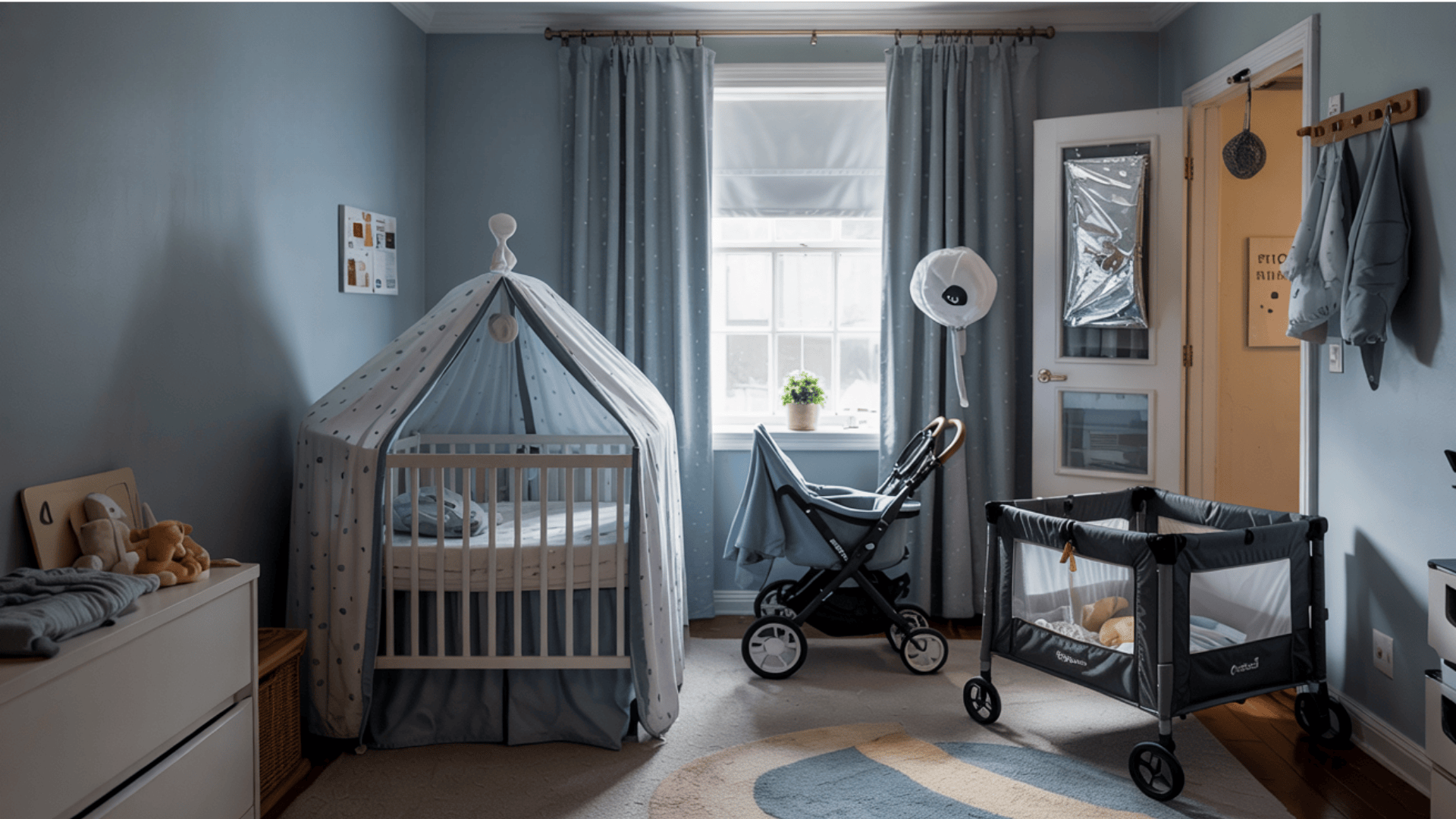
Blackout curtains are the gold standard for darkening rooms, with thermal-lined options providing additional temperature control.
For enhanced effectiveness, combine them with window frames or tension rods that eliminate light gaps along edges.
Portable blackout solutions offer convenience when traveling. Consider travel blackout blinds with suction cups, pop-up sleep tents, or CoziGo-style stroller covers that create instant dark environments anywhere.
Budget-conscious parents can implement temporary solutions like aluminum foil on windows (secured with painter’s tape), cardboard cut to window dimensions, or dark fabric attached with command hooks.
Heavy-duty garbage bags or shower curtain liners also work effectively when taped to window frames.
Helpful products include SnoozeShade for strollers and car seats, SlumberPod for travel cribs, blackout window film that adheres directly to glass, and door draft stoppers to block hallway light infiltration.
Common Challenges and Solutions
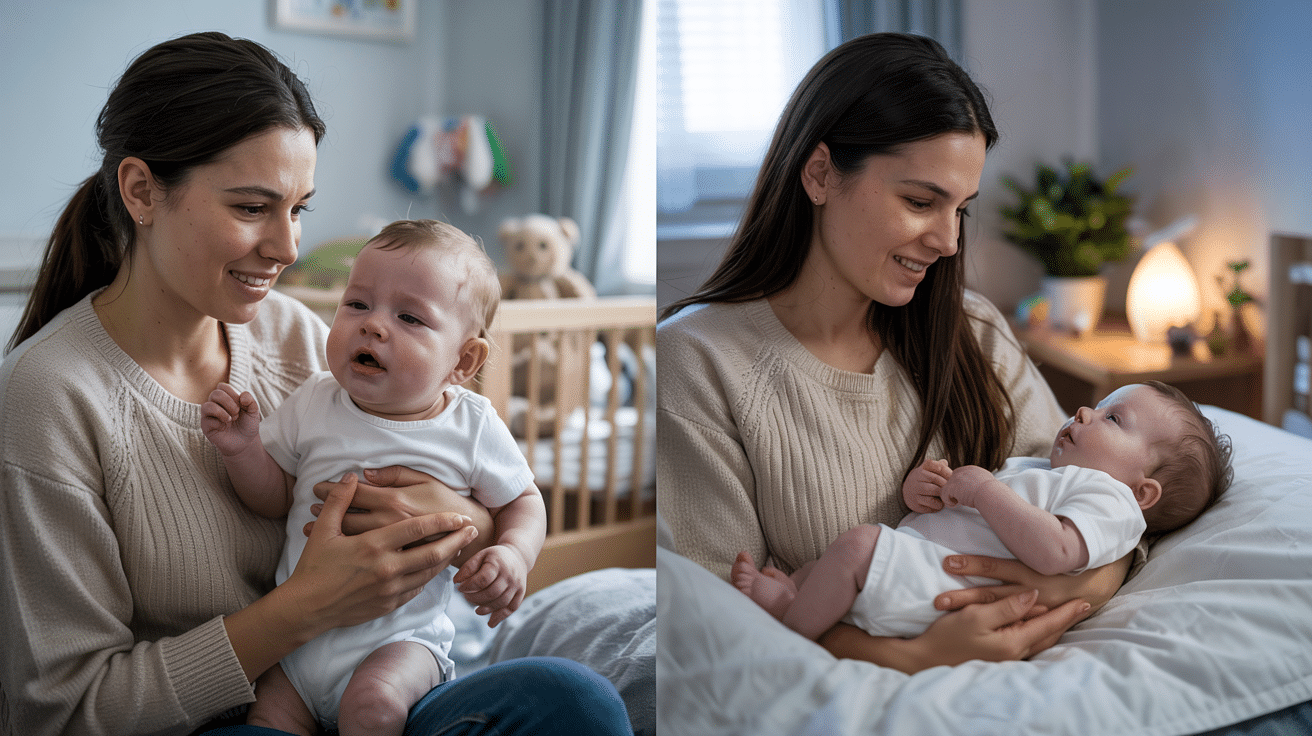
Even with a solid sleep routine, real-life situations can throw things off, like light changes, different nap locations, or seasonal shifts.
This quick table outlines common challenges and practical solutions to help maintain consistent, restful sleep for your baby.
| Challenge | Solution |
|---|---|
| Baby is confused between day and night | Expose your baby to bright morning light to help reset their internal clock. |
| Naps feel the same day and night | Use different sleep cues like swaddling for night and sleep sacks for naps. |
| Overstimulated before naps | Create a short pre-nap routine to signal it’s time to wind down. |
| Early sunrise in summer | Install blackout curtains with shades to block early-morning light. |
| Bright daycare nap rooms | Use a SlumberPod or request dimmer lighting for more restful sleep. |
| Naps in stroller or car | Use stroller covers or car window shades to create a darker nap environment. |
When to Adjust Your Approach?

As babies develop, their darkness needs to evolve.
Newborns benefit from maximum darkness for all sleep. Still, by 4-6 months, you can begin introducing some dim light during the final nap of the day, helping differentiate between daytime and nighttime sleep.
Around 8-12 months, gradually reduce darkness for one nap, typically the morning nap, while maintaining darker conditions for afternoon sleep when melatonin dips naturally.
Watch for signs that your current setup needs adjustment: fighting naps despite tiredness, early waking, shortened naps, or increased night-waking.
If your once-reliable sleeper suddenly resists dark rooms, it might indicate readiness for modified lighting conditions as their circadian rhythm matures.
Parting Words
Creating a darkened environment for your newborn’s daytime naps supports their developing sleep cycles, enhances melatonin production, and leads to more restorative sleep.
While research strongly favors darkness for optimal napping, the perfect level varies from baby to baby.
Remember, you’re not failing if you can’t create pitch-black conditions for every nap. The goal is consistency alongside practicality that works for your family’s lifestyle.
Some babies thrive with blackout conditions, while others sleep soundly with simple room-darkening solutions.
As your little one grows, their sleep needs will evolve. The darkness level that works perfectly at two months may need adjustment at six months.
Stay attuned to your baby’s changing sleep cues and be willing to adapt your approach.
Trust your instincts—you know your baby best. After all, quality sleep benefits everyone in the family, not just your little dreamer.
If you’re interested in more informational content on mothers and babies, feel free toclick here and explore other blogs that you might enjoy.
